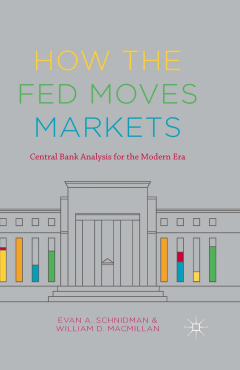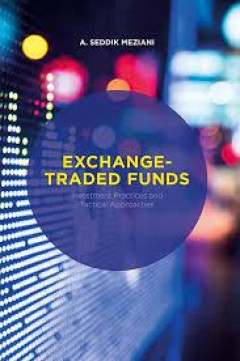Filter by

Alessandro Torlonia: The Pope’s Banker
This book provides a vivid biography of a towering Italian banker, pioneer and entrepreneur. It weaves the entrepreneurial ventures of Alessandro Torlonia (1800-1886) through the narratives of business and politics in the Nineteenth century, the growth of European financial markets and the decline of Papal power during the Italian Risorgimento. The discussion is founded in rigorous historical r…
- Edition
- Ed. 1
- ISBN/ISSN
- 978-3-319-41998-5
- Collation
- XV, 269
- Series Title
- Palgrave Studies in the History of Finance
- Call Number
- 332.4 FEL a

The Icelandic Financial Crisis
This book presents a detailed account of Iceland’s recovery from the tumultuous banking collapse that overturned its financial industry in 2008. Early chapters recount how Iceland’s central bank was unable to follow the quantitative easing policies of the time to print money and save the banks, while serving the world´s smallest currency area. The book goes on to explore how the government…
- Edition
- -
- ISBN/ISSN
- 978-1-137-39455-2
- Collation
- XVI, 349
- Series Title
- Palgrave Macmillan Studies in Banking and Financial Institutions
- Call Number
- -

Venture Capital and the Inventive Process VC Funds for Ideas-Led Growth
The inventive process is the most important driver of economic growth. Venture capital (VC) funds have contributed a small, but critical, part to the inventive process. VC funds boost the inventive process by selecting a small number of radical ideas out a large flow of ideas and invest in their testing, development and commercialization. They bring together capital from general savings, manage…
- Edition
- -
- ISBN/ISSN
- 978-1-137-53660-0
- Collation
- XIV, 123
- Series Title
- -
- Call Number
- -

Valuing Banks A New Corporate Finance Approach
This book aims to overcome the limitations the variations in bank-specifics impose by providing a bank-specific valuation theoretical framework and a new asset-side model. The book includes also a constructive comparison of equity and asset side methods. The authors present a novel framework entitled, the “Asset Mark-down Model”. This method incorporates an Adjusted Present Value model, whi…
- Edition
- -
- ISBN/ISSN
- 978-1-137-56142-8
- Collation
- 19 b/w illustrations
- Series Title
- -
- Call Number
- -

How the Fed Moves Markets{ Central Bank Analysis for the Modern Era
Central banks have a profound impact on financial markets, and investors struggle to keep informed about their complex policy decisions. Technological and financial developments have transformed the US Federal Reserve Bank from a financial black box into a vocal, increasingly transparent institution—and the result is such a wealth of textual data that clues to future policy decisions may be l…
- Edition
- -
- ISBN/ISSN
- 978-1-349-56298-5
- Collation
- X, 198
- Series Title
- -
- Call Number
- 330 SCH h

The European Banking Union
Why did European policy-makers introduce the Banking Union? Which are its main features? How does it affect banks and their customers? This book tries to answer these questions, by providing a clear description of the building blocks of the banking union, and by discussing the issues that still remain unanswered.
- Edition
- -
- ISBN/ISSN
- 978-1-137-56314-9
- Collation
- XIII, 136
- Series Title
- Palgrave Macmillan Studies in Banking and Financial Institutions
- Call Number
- -

Exploring Services Science 6th International Conference, IESS 2015, Porto, P…
- Edition
- -
- ISBN/ISSN
- -
- Collation
- -
- Series Title
- -
- Call Number
- -
- Edition
- -
- ISBN/ISSN
- -
- Collation
- -
- Series Title
- -
- Call Number
- -

The Book of Payments
This book examines the nature of retail financial transaction infrastructures. Contributions assume a long-term outlook in their exploration of the key financial processes and systems that support a global transition to a cashless economy. The volume offers both modern and historic accounts that demonstrate the constantly changing role of payment instruments. It brings together different theore…
- Edition
- -
- ISBN/ISSN
- 978-1-137-60231-2
- Collation
- XXXVI, 416
- Series Title
- -
- Call Number
- -

Exchange-Traded Funds Investment Practices and Tactical Approaches
With Exchange Traded Fund (ETF) sponsors constantly making new types of ETFs available, there is now a variety of ETFs that provide investors with an opportunity to develop diversified investment portfolios. Their sophistication has also grown to include a breed of ETFs that do not passively track the performance of an underlying index. With this assortment of newer ETFs, and more on the way, m…
- Edition
- -
- ISBN/ISSN
- 978-1-137-39094-3
- Collation
- 3 b/w illustrations, 20 illustrations in colour
- Series Title
- -
- Call Number
- -

Developing New Products and Services
A central theme of this book is that there is, or should be, a constant struggle going on in every organization, business, and system. The struggle is fueled by the dynamic tension that exists between delivering Midas feature-rich versions of products and services using extravagant engineering and delivering low-cost Hermes versions of products and services using frugal engineering (see the…
- Edition
- -
- ISBN/ISSN
- -
- Collation
- -
- Series Title
- -
- Call Number
- 330 SAN d
 Computer Science, Information & General Works
Computer Science, Information & General Works  Philosophy & Psychology
Philosophy & Psychology  Religion
Religion  Social Sciences
Social Sciences  Language
Language  Pure Science
Pure Science  Applied Sciences
Applied Sciences  Art & Recreation
Art & Recreation  Literature
Literature  History & Geography
History & Geography